Weed barriers are essential for keeping your garden looking neat and healthy, without all the extra fuss of pesky weeds. If you’re looking to tackle that garden challenge, here are 15 creative ideas to help you choose the perfect barrier solution for your outdoor space.
Newspaper Layers for Garden Protection
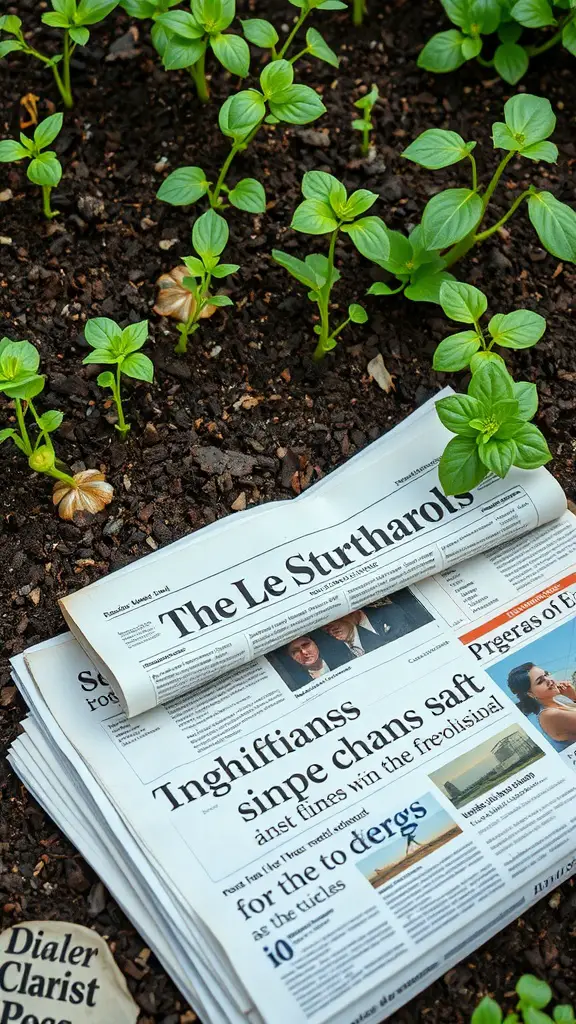
Using newspaper as a weed barrier is a smart and eco-friendly choice for your garden. The image shows a layer of newspaper laid over freshly sprouted plants. This method is not only economical but also effective in suppressing weeds.
When you place newspapers on the soil, they block sunlight from reaching weeds, preventing their growth. Over time, the paper breaks down, adding organic matter back into the soil. It’s a win-win!
To use this technique, simply gather several sheets of newspaper and lay them down around your plants. You can cover them with a layer of mulch for added weight and protection. Just be mindful of how much you cover your plants; you want to shield the soil without smothering your little green friends.
Wood Chips as a Natural Barrier
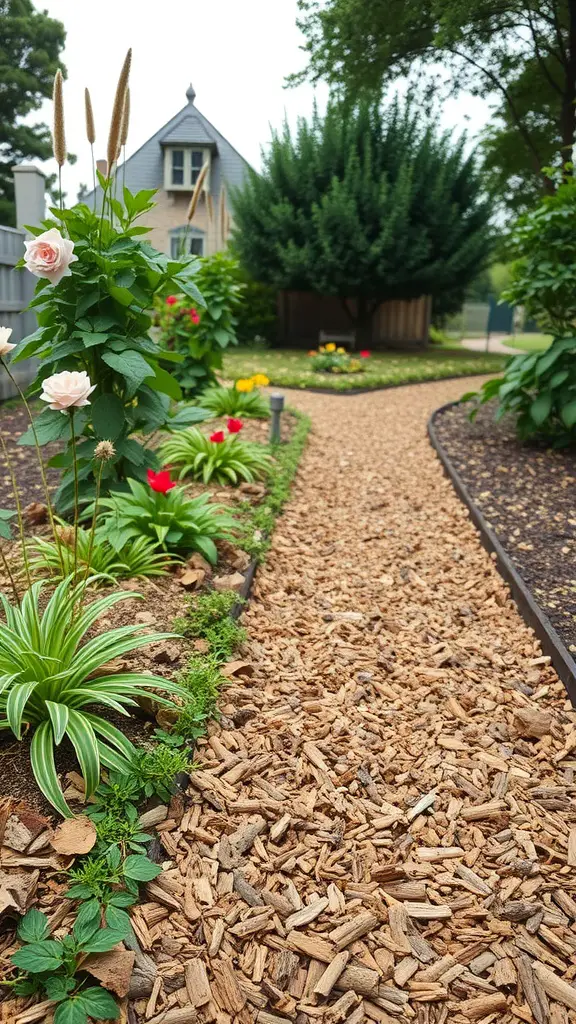
Wood chips are a fantastic, natural option for both aesthetics and functionality in your garden. They create a neat, tidy path that adds charm to your outdoor space. In the image, you can see how wood chips form a rustic walkway, bordered by vibrant flowers and greenery. This not only enhances the beauty of the garden but also serves a practical purpose.
Using wood chips helps suppress weeds effectively. They block sunlight from reaching weed seeds, making it harder for them to grow. Furthermore, as the wood chips decompose, they enrich the soil, promoting better plant health. The earthy tones of the chips complement the colorful blooms beautifully, creating a warm, inviting atmosphere.
Installing wood chips is a simple process. Start by clearing the area of existing weeds and debris. Lay down a landscape fabric if you want added weed control, then spread a thick layer of chips on top. This approach not only prevents weeds but also retains moisture, benefiting your plants.
Overall, wood chips are a stylish and practical choice for anyone looking to enhance their garden. They provide an effective weed barrier while adding a natural touch to your landscaping.
Straw for Moisture Retention and Weed Suppression

Straw is a fantastic choice for your garden beds. Spread across the soil, it acts as a protective layer. This layer helps in retaining moisture, which is essential for plant health. When the sun shines down, the straw keeps the soil cooler, reducing the need for frequent watering.
Besides moisture retention, straw plays a big role in weed suppression. Weeds can be a gardener’s worst nightmare, competing with your plants for nutrients and water. A thick layer of straw makes it harder for weeds to grow, giving your plants the upper hand. You’ll find that your garden stays cleaner and healthier with less effort.
Using straw is also eco-friendly. It’s a natural material, often sourced from leftover crops, making it a sustainable choice for gardening. So, not only do you help your plants thrive, but you also support the environment. If you’re looking for a simple and effective weed barrier, straw is definitely worth considering!
Plastic Sheeting for Temporary Coverage

Plastic sheeting can be a great solution for temporary coverage in your garden. It’s lightweight and easy to set up, making it perfect for quick projects. The image shows a simple setup with plastic sheeting creating a protective barrier over the soil and plants.
This setup can help keep unwanted weeds at bay while allowing sunlight to reach your plants. By placing transparent plastic sheeting over your garden area, you create a mini greenhouse effect, which can help maintain warmth and moisture for your plants.
In the photo, you can see green plants thriving next to the sheeting. This method is a smart way to protect young growth from harsh weather. A handy water bottle is also visible, which can be useful for misting or watering the plants underneath.
Using plastic sheeting is not just practical; it’s also budget-friendly. You can easily find rolls of plastic sheeting at garden centers or home improvement stores. Just cut the size you need, secure it in place, and watch your garden flourish without the hassle of weeds!
Landscape Fabric with Mulch Combination
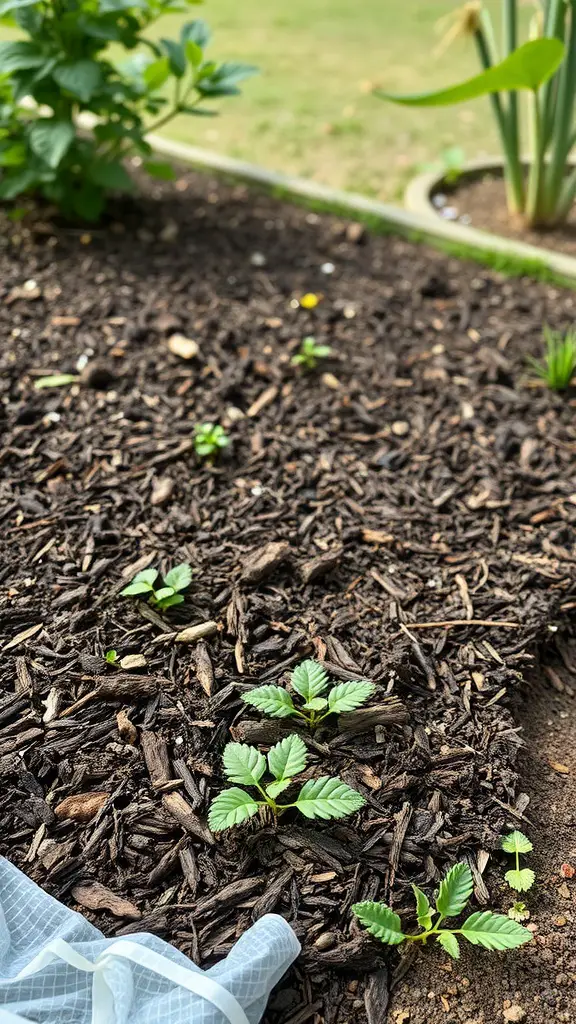
Using landscape fabric with mulch is a smart move for any garden enthusiast. This method helps maintain soil moisture while blocking pesky weeds from taking over your plants. In the image, you can see young plants thriving in a bed covered with dark mulch. The fabric underneath does its job, keeping the weeds at bay.
The mulch not only looks great but also provides insulation for the roots. It helps in regulating soil temperature, which is essential for healthy growth. Plus, as it decomposes, it adds nutrients back into the soil. You can notice the beautiful green leaves of the young plants peeking through the rich, dark mulch.
When setting this up, simply lay down the landscape fabric over the soil, cutting slits or holes for the plants. Then, spread a thick layer of mulch on top. This combination is effective and low maintenance, making your gardening experience much more enjoyable.
Cardboard as an Eco-Friendly Option
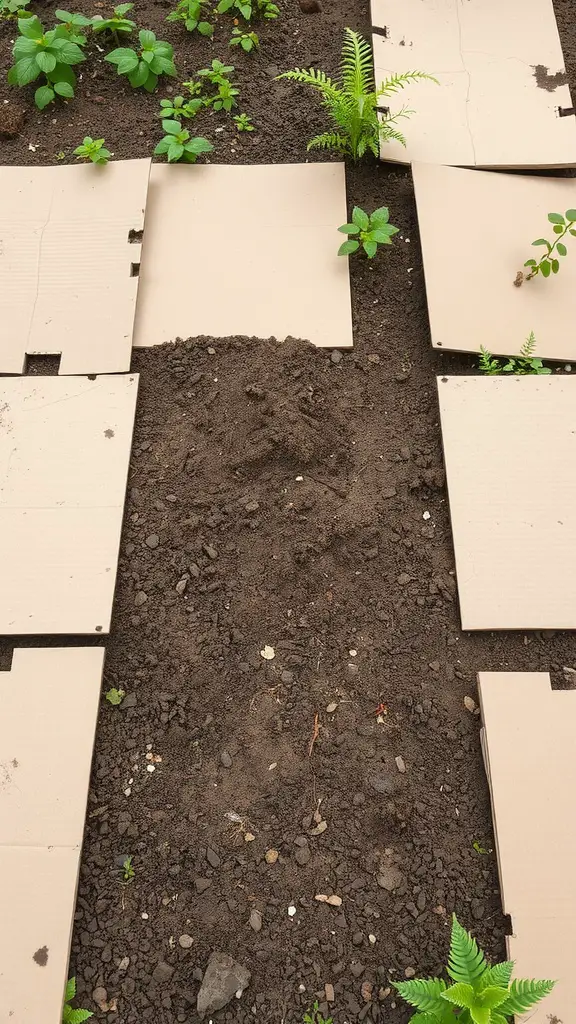
Using cardboard as a weed barrier is a simple and eco-friendly choice for gardeners. The image shows cardboard laid out in a garden bed, creating a protective layer over the soil. This helps keep pesky weeds at bay while allowing air and moisture to reach the plants.
Cardboard is often readily available and can be reused from packaging materials. It’s a great way to recycle and minimize waste in your gardening practices. As it breaks down over time, it enriches the soil, adding beneficial organic matter.
In the image, you can see plants peeking through the gaps in the cardboard. This setup works well for both new gardens and established ones. Simply place the cardboard on the soil, and cut holes where you want to plant. This method not only suppresses weeds but also helps retain soil moisture.
Overall, using cardboard is an easy, effective, and sustainable method to improve your garden’s health while keeping it tidy.
burlap Sacks for Organic Gardening
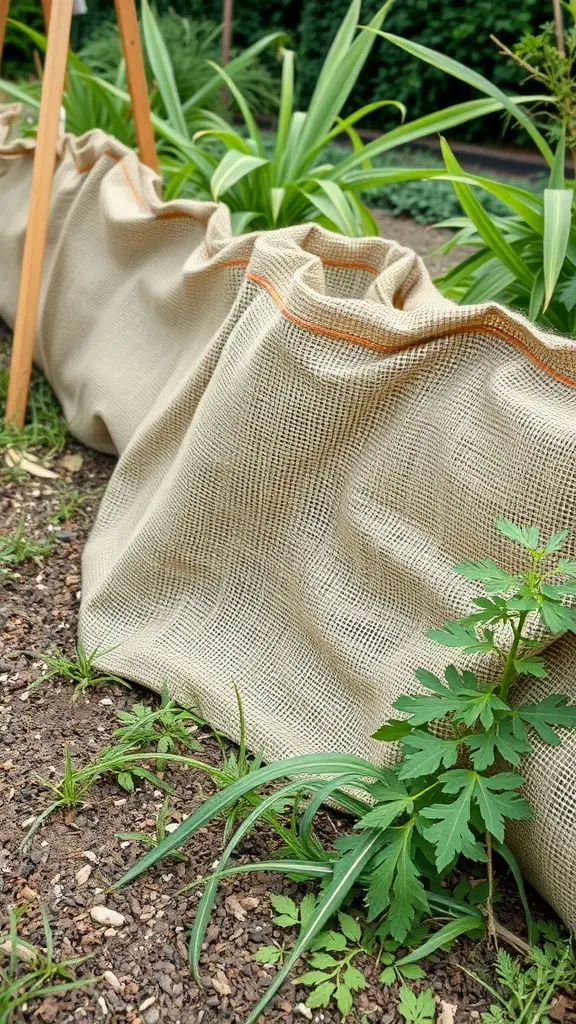
Burlap sacks are a fantastic resource for organic gardening. They are durable, breathable, and biodegradable, making them a great option for anyone looking to garden sustainably. In the image, you can see burlap sacks lined up, ready to protect plants from weeds and retain soil moisture.
Using burlap sacks in your garden helps create a barrier against unwanted weeds while allowing water and air to flow through. This keeps your plants healthy and encourages growth. The natural fibers break down over time, enriching the soil and promoting a healthy ecosystem.
Another advantage is their versatility. You can use them to cover root vegetables, create pathways, or even as temporary planting beds. This flexibility makes burlap sacks a smart choice for gardeners of all experience levels.
So, if you’re into organic gardening, consider adding burlap sacks to your toolkit. They’re effective, eco-friendly, and add a rustic charm to your garden!
Geotextile Fabric for Weed Control
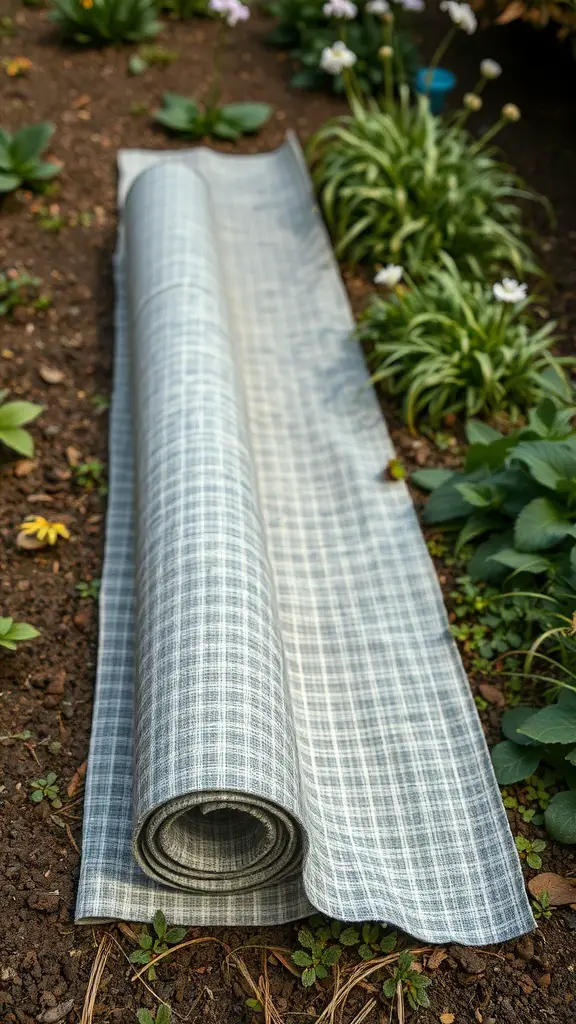
Geotextile fabric is becoming a go-to option for anyone looking to keep their gardens weed-free. This sturdy material, as shown in the image, rolls out easily and lays flat on the soil. It’s made from permeable fabric that allows water and nutrients to reach your plants while blocking unwanted weeds.
The image shows a neatly rolled-out piece of geotextile fabric, ready for installation in a garden bed. Its grid pattern not only provides a visually appealing touch but also helps with placement. You can see the crisp lines, which make it easy to align and cut as needed.
Using geotextile fabric is a smart way to tackle weed problems. It reduces the amount of time spent on maintenance, letting you enjoy your garden more. Once in place, this fabric can last for several years, providing long-term support in your fight against weeds. Plus, it helps your plants thrive by retaining soil moisture.
When installing geotextile fabric, make sure to cover the entire area where you don’t want weeds. Overlap the edges slightly to create a barrier. You can secure it with landscape staples or cover it with mulch for added protection. This way, you can keep your garden looking neat and tidy while promoting healthy growth.
Cocoa Hulls for Nutrient-Rich Weed Control
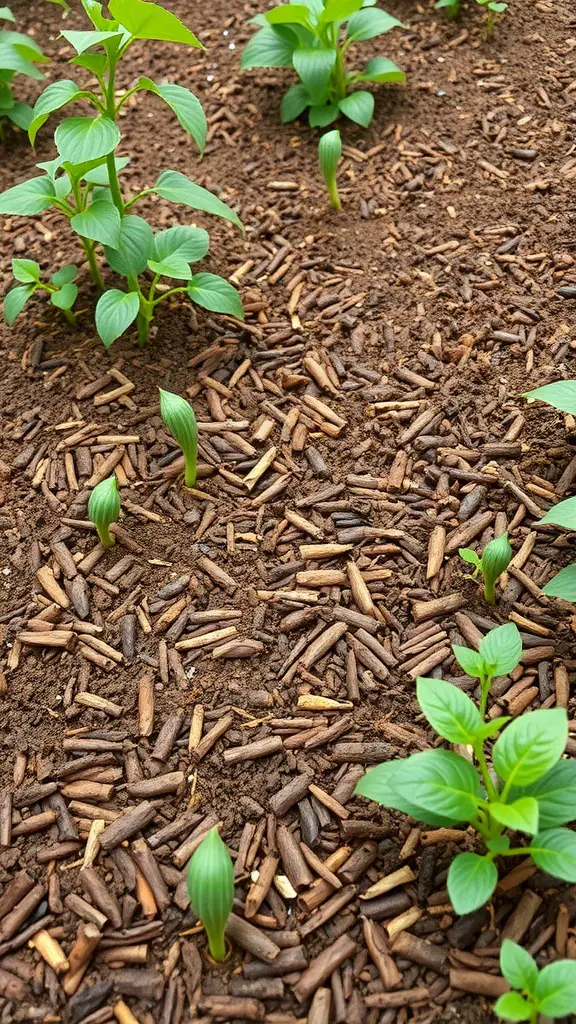
Cocoa hulls make for a fantastic weed barrier in your garden. The image shows young plants sprouting amidst a layer of cocoa hulls. This rich mulch not only looks great but also helps retain moisture in the soil.
Using cocoa hulls can give your garden a neat appearance while suppressing pesky weeds. These natural materials break down over time, adding valuable nutrients back into the soil. This means that while you keep weeds at bay, you’re also enriching your garden bed.
Applying a layer of cocoa hulls around your plants is simple. Just spread them evenly to cover the soil. It’s an excellent way to enhance your garden’s growth and health. Plus, the delightful chocolate scent is an added bonus that many gardeners enjoy!
Compost as a Natural Barrier Layer
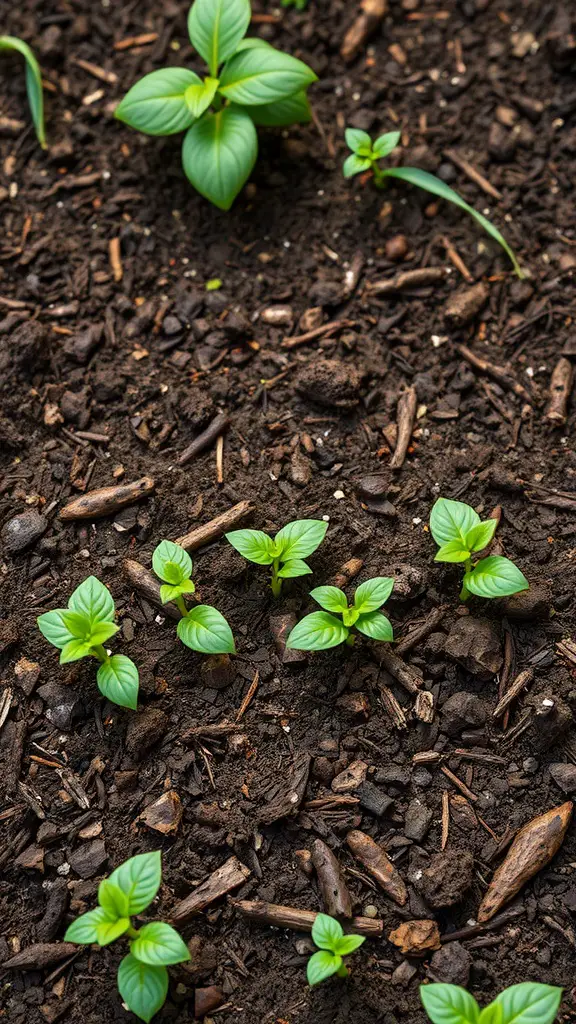
Compost is a fantastic option for a natural barrier layer in your garden. The image shows young plants sprouting in rich, dark soil, highlighting the benefits of using compost. This layer not only helps retain moisture but also provides vital nutrients to your plants.
Using compost as a barrier helps suppress weeds. The organic matter blocks sunlight from reaching weed seeds, making it harder for them to grow. This makes your gardening efforts more effective and keeps your plants thriving.
When applying compost, ensure it’s distributed evenly around your plants. This promotes healthy growth while protecting them from unwanted competition. Over time, the compost will break down, enriching your soil even further. You’ll notice stronger, healthier plants that are more resistant to pests and diseases.
Rubber Mulch for Long-lasting Solutions
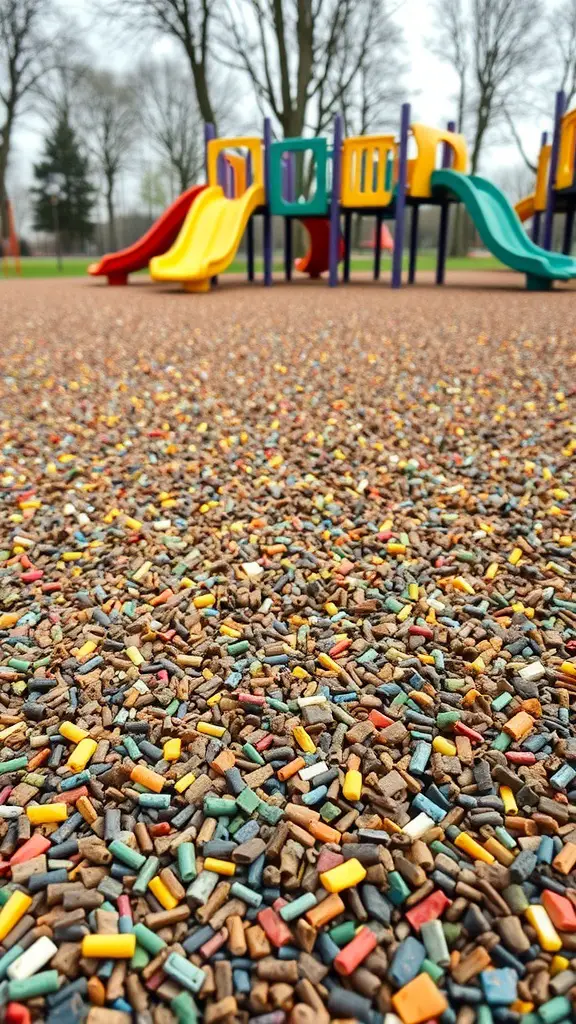
Rubber mulch is a fantastic choice for keeping your garden or play area tidy and safe. The image shows a vibrant layer of rubber mulch spread beneath a playground structure. It offers a colorful and cushioned surface for kids to play on, which minimizes the risk of injury during falls.
This type of mulch is made from recycled tires, making it an eco-friendly option. The colorful bits you see are not just pleasing to the eye; they also serve a practical purpose. They help in suppressing weed growth while retaining moisture in the soil. Plus, they won’t decompose like organic mulch, providing a long-lasting solution for your landscaping needs.
Using rubber mulch in play areas ensures a soft landing for children. It’s easy to clean and maintain, making it a great choice for busy families and community spaces. Overall, rubber mulch stands out as a reliable and stylish option for various outdoor applications.
Synthetic Fabric Options for Durability
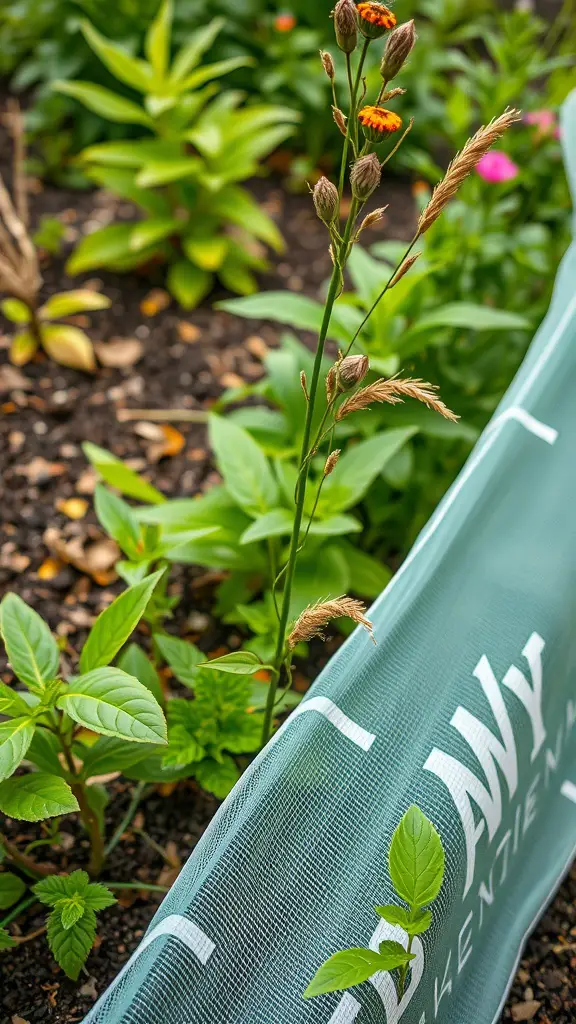
Synthetic fabrics are a fantastic choice for weed barriers. They offer long-lasting durability and are designed to withstand various garden conditions. Unlike natural materials, synthetic options don’t break down as quickly, making them a reliable ally in keeping those pesky weeds at bay.
The image showcases a synthetic weed barrier fabric in a garden setting. You can see how it lays flat, providing a protective layer over the soil. This barrier helps to control weed growth while still allowing for water and nutrients to reach the plants.
Another great feature of synthetic fabrics is their lightweight nature. It’s easy to install and can be cut to fit any garden layout. Plus, they often come in different thicknesses, allowing you to choose the right level of protection based on your garden’s needs.
Plant Ground Covers for Natural Suppression
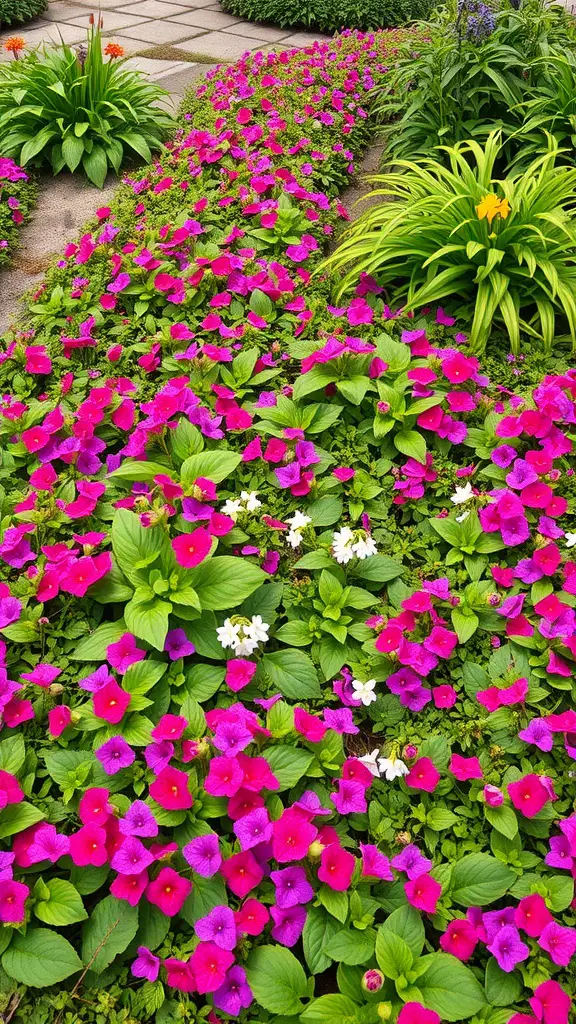
Ground covers are a lovely way to tackle weeds naturally. The image shows a vibrant array of flowers, mainly in shades of pink, which beautifully fills the space. These colorful blooms not only add charm to a garden but also serve an important function.
Ground covers, like the ones in the picture, spread out to cover the soil. This helps block sunlight, making it harder for weeds to grow. The lushness you see can create a natural barrier against unwanted plants.
Choosing the right ground covers can enhance your garden’s look while promoting health. The flowers shown are not just pretty; they thrive in various conditions and can adapt to different soil types. So, whether you have a sunny spot or a shaded area, there’s a ground cover for you!
To get started, consider mixing different types of ground covers. This creates depth and interest in your garden. With just a little planning, you can enjoy a beautiful landscape that also keeps weeds at bay.
Permeable Pavers for Weed-Free Driveways

Permeable pavers are a fantastic option for anyone looking to create a weed-free driveway. The image shows a well-designed pathway made of various colored pavers, with a few small plants peeking through the gaps. This design not only looks attractive but also allows water to flow through, reducing runoff.
Using permeable pavers can help manage stormwater effectively. They let rainwater seep into the ground, which is essential for maintaining a healthy landscape. Plus, this feature minimizes erosion, making your driveway more durable over time.
While no solution is entirely weed-proof, permeable pavers greatly reduce the chances of unwanted plants sprouting up. With the right installation and maintenance, you can enjoy a clean, polished look without the hassle of frequent weeding. It’s a stylish and practical choice for modern outdoor spaces.
Living Mats of Grass for Eco-Friendly Solutions
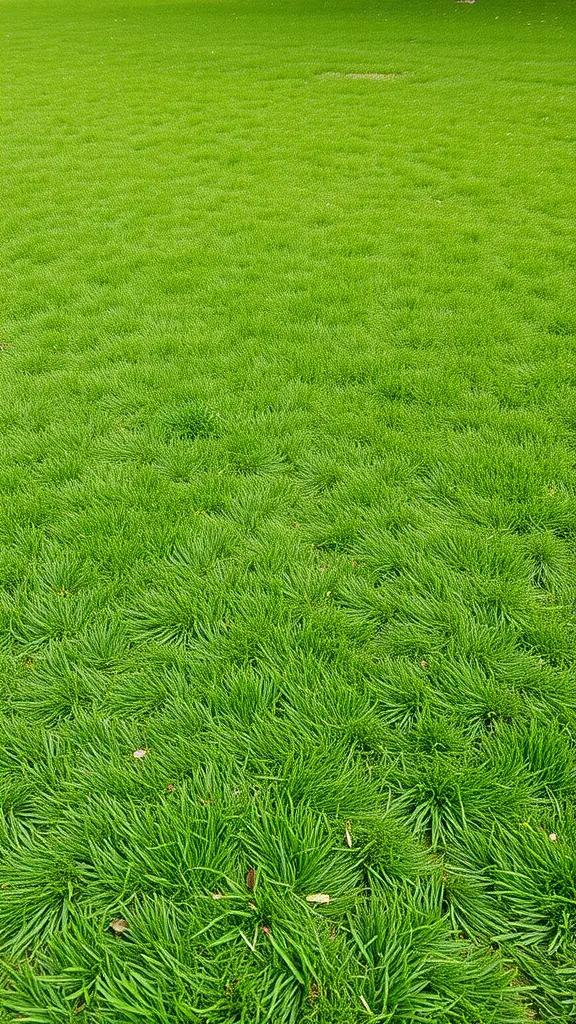
Living mats of grass are a fantastic way to keep your garden healthy while being eco-friendly. This image beautifully showcases a lush green area covered in vibrant grass. These mats not only look great but also serve several practical purposes.
Using grass as a barrier can help prevent weeds from taking over your garden space. The dense growth of the grass blocks sunlight that weeds need to thrive. This method is much safer than using chemicals and adds a natural touch to your landscape.
Another benefit is that grass mats promote biodiversity. They provide a habitat for various insects and small creatures, which are key to maintaining a balanced ecosystem. Plus, grass can help improve soil quality, making it easier for other plants to grow.
For those looking for low-maintenance options, once established, these mats require minimal care. Regular mowing and occasional watering are all that’s needed. It’s an easy way to achieve a beautiful garden without too much hassle.




